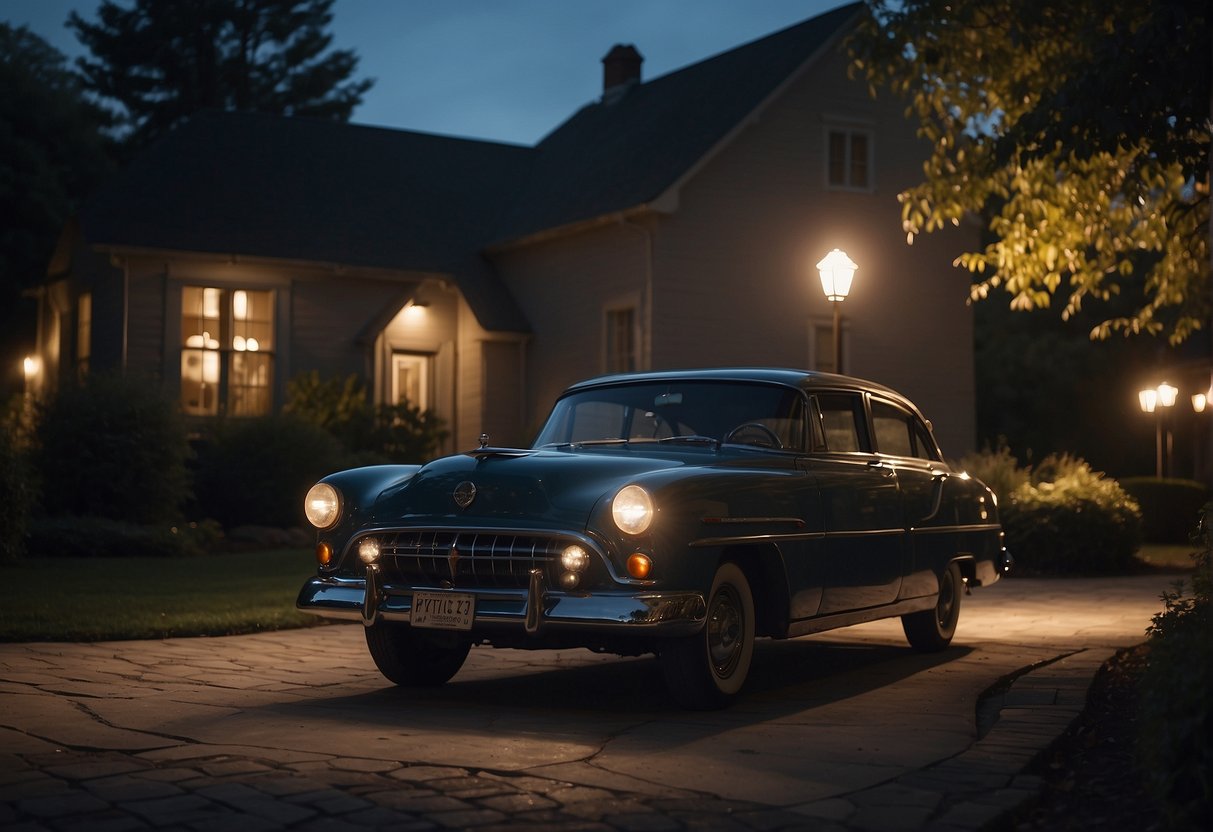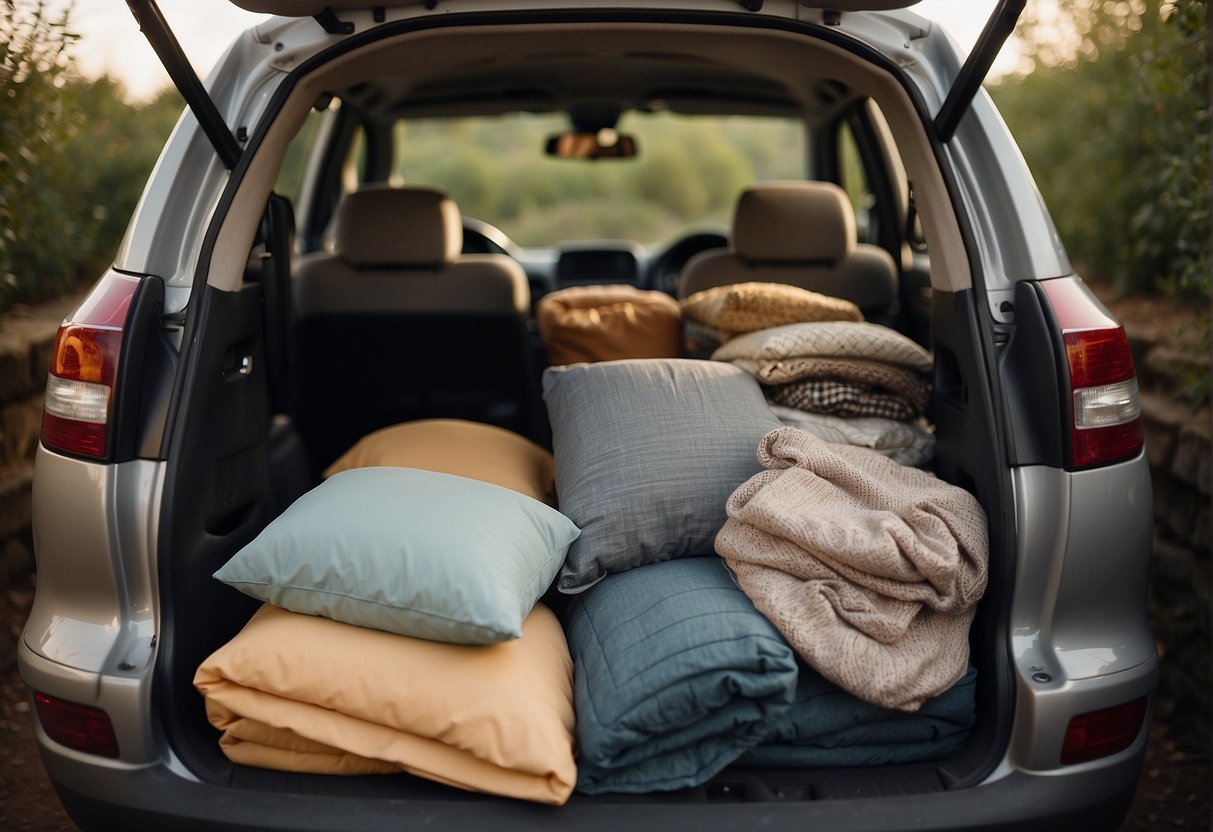How to Sleep in a Car: Ultimate Guide for Comfort and Safety
Sleeping in a car can be a cost-effective, versatile, and sometimes necessary solution for those who find themselves in need of a rest during long road trips or while traveling. Knowing how to sleep comfortably and safely in a car is crucial to having a good night’s sleep and feeling refreshed the next day. While it may not be as luxurious as a traditional bed, there are tips and tricks to make the experience more enjoyable.

The type of vehicle you have, the location you choose, and how well you prepare your car for a night’s rest all play a role in ensuring a successful night of sleep. Creating a comfortable sleep environment, with the right equipment and adhering to safety and legal guidelines are essential when sleeping in a car. In addition, being mindful of additional factors that contribute to better sleep quality can greatly enhance your overall experience.
Key Takeaways
- Create a comfortable and safe sleep environment in your vehicle.
- Adhere to safety and legal guidelines when choosing a location to park overnight.
- Utilize the right equipment and considerations to improve sleep quality.
Choosing the Right Vehicle
Size and Space Considerations
When looking for a vehicle to sleep in, size plays a crucial role. Larger vehicles, like vans and SUVs, typically provide more space for a comfortable sleeping arrangement. In smaller sedans, you may need to utilize the back seat or fold down the rear seats to create enough space for sleeping comfortably.
In any car, it’s important to maximize available space. This can be done by organizing your belongings and using storage solutions such as cargo nets or seatback organizers. Before settling for the night, you should also ensure that you have enough room to stretch and change positions to avoid discomfort while sleeping.
Vehicle Safety and Privacy
Vehicle safety and privacy are essential aspects to consider when sleeping in a car. For safety reasons, choose well-lit parking areas, and always lock your doors. It’s a good idea to have a device to block out light and noise-canceling materials like foam or earplugs to improve your sleep quality.
- Proper Ventilation: Crack a window or use a vent to ensure proper airflow in the vehicle while sleeping.
- Sleeping Gear: Use a comfortable pillow and blanket to ensure a restful night’s sleep, as well as a sleeping pad or yoga mat to lie on for better insulation and cushioning.
- Window Coverings: Invest in window shades or curtains to achieve more privacy and block out external light.
In conclusion, choosing the right vehicle for sleeping entails considering factors such as size, space, safety, and privacy. By addressing these factors, you’ll be able to sleep comfortably and safely inside your car.
Preparing the Vehicle

Seat Adjustment
One of the first aspects to consider when preparing your car for sleeping is adjusting the seat. I recommend experimenting with different angles to find the most comfortable position. Based on a study, seat angles of 45 and 60 degrees have been tested for their impact on sleep quality. Aligning the seat properly can better support your body and enhance your sleep experience.
Creating a Flat Surface
If possible, creating a flat surface can make sleeping in a car significantly more comfortable. To do this, you might need to move or remove some objects from the vehicle. A straightforward approach is to:
- Clear any clutter from the rear seats and trunk area.
- Fold down the rear seats, if possible, to create a larger flat surface.
- Place a mattress, sleeping pad, or blankets on the flattened seat area for added comfort.
This setup creates a more bed-like environment, making it easier for you to relax and sleep more soundly.
Window Covers
Blocking out external light is essential for quality sleep. In a car, using window covers can create a darker environment and increase privacy. Here are my suggestions for window covers:
- Purchase custom-fit car window shades.
- Use sunshades designed for the windshield.
- Cut cardboard or fabric to fit your windows and secure them with tape or magnets.
Experiment with different materials to achieve an ideal balance of darkness and privacy.
Ventilation
Ensuring proper ventilation is crucial for maintaining a comfortable environment inside the car. When sleeping in your vehicle, it is best to crack open windows slightly to let fresh air circulate. If the weather permits, opening windows more can help regulate indoor temperatures and reduce humidity caused by your breath. However, always prioritize safety – avoid compromising the security of your vehicle and yourself.
Remember, these suggestions aim to help you create a more comfortable and conducive environment for sleeping inside a car. Applying them can contribute to improved sleep quality and overall well-being when circumstances require you to rest inside a vehicle.
Comfort and Equipment
Sleeping Supplies
To get a good night’s sleep in a car, it’s essential to have the right sleeping supplies. I recommend using a comfortable pillow, which should be supportive enough to maintain proper neck alignment. A lightweight blanket or sleeping bag can help keep you warm, while an eye mask and earplugs will help block out unwanted light and noise.
Temperature Control
Managing the temperature inside the car is crucial for a comfortable sleep. One option is to use the car’s ventilation system, although this might not be the most energy-efficient solution. A more eco-friendly alternative is to crack open a window just enough to let in fresh air. In colder conditions, consider bringing a warm blanket or an extra layer of clothing. On the other hand, a portable fan can help keep you cool in warmer weather. In one study, researchers found that cold air and the car’s radio can also help counteract sleepiness.
While sleeping in a car might not be as comfortable as your own bed, the right combination of supplies and proper temperature control can greatly improve the quality of your rest. Just remember to find a safe location, and always take breaks if you’re feeling tired while driving.
Safety and Legality
Parking Regulations
It’s essential to be aware of the local parking regulations when choosing a spot to sleep in your car. Some locations may have strict rules or permit-only parking, resulting in fines or towing. Consider overnight parking zones, rest areas, Walmart parking lots, or campgrounds with proper permissions.
- Rest Areas: These are designated spots along highways for drivers to rest, sleep, or take a break.
- Walmart Parking Lots: Some Walmarts allow overnight stays, but it is essential to confirm before parking.
Staying Alert to Surroundings
Stay vigilant while sleeping in your car to ensure your safety. Choose well-lit areas, lock your car doors, and keep windows slightly open for ventilation while still maintaining privacy. Investing in sunshades or curtains will further increase your sense of security. Staying alert to your surroundings also involves taking care of yourself; don’t disregard the effects of sleep loss on your overall wellbeing and driving performance. Make sure your sleep environment is comfortable and free from distractions.
As a final reminder, always consider the safety, legality, and your own personal well-being when sleeping in a car. Each situation may be different, so adapt your approach based on the circumstances and location.
Additional Tips for a Good Night’s Sleep
Pre-sleep Routine
Creating a pre-sleep routine helps signal my body that it’s time to sleep. I like to keep this routine consistent, even when sleeping in a car. First, I find a safe and quiet location to park. Then, I make sure to recline my seat and adjust it for maximum comfort. I also remove any distractions, like turning off my phone or putting it on silent. A travel pillow and eye mask come in handy for added comfort and blocking out light. To relax, I practice a few minutes of deep breathing or meditation before drifting off.
Food and Drink Suggestions
What I consume before sleep can play a role in the quality of my rest, even in a car. To help me sleep, I stick to light, easy-to-digest foods such as whole grains, lean proteins, and vegetables. Foods rich in magnesium, like watermelon seeds, can also aid in relaxation.
It’s essential to avoid heavy, spicy, and fried foods which can cause indigestion or discomfort. Caffeine and alcohol are also best avoided as they can disrupt sleep patterns.
Here are some food and drink suggestions for better sleep in a car:
- Heathy Snacks: Almonds, whole grain crackers with peanut butter, or a banana.
- Beverages: Herbal tea (e.g., chamomile) or warm milk.
- Avoid: Coffee, soda, energy drinks, chocolate, and alcohol.
By tailoring my pre-sleep routine and being mindful of food and drink choices, I’ve found that getting quality sleep in a car is achievable.